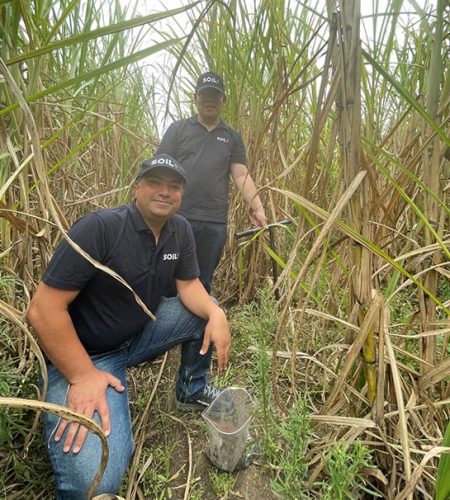A fact sheet to support the Soil CRC’s ‘Evaluating soil functional resilience to compaction and drought’ webinar., delivered as part of our ‘Building technical capacity for improved soil management’ webinar series.
In this webinar, Dr Mehran Rezaei Rashti, Griffith University, discusses findings from the ongoing Soil CRC research project, ‘Evaluating soil functional resilience’ (4.1.003). The study aims to provide a practical methodology for assessing the resilience of soil in agricultural ecosystems against the environmental stresses of compaction and drought. This research provides valuable insights into the role of management practices and organic residues in enhancing soil resilience to drought conditions.
Background
Healthy soil can supply plants with balanced nutrients, water, and air, as part of a complex biological system in a disease-free environment.
Soil resistance is the ability of soil to withstand environmental stresses, such as drought and compaction, without degradation of its physical, chemical, and biological properties. Soil resilience is the capacity of the soil to recover and regain its functionality after being exposed to these environmental stresses.
When the soil’s functionality deteriorates, its ability to cope with stress is reduced. This can affect the soil’s fertility and health, leading to a decline in crop yield and profitability.
Practical, robust, affordable protocols for measuring soil health indicators are currently lacking. To drive practice change, growers need access to simple, robust and affordable methods for measuring their soil health status.
Research objectives
This project aims to provide an improved process-based understanding of how soil systems function, change and adapt to compaction and drought stresses. To achieve this, it focuses on three main research objectives:
- To assess the mechanisms responsible for soil microbial functional response to compaction and drought stresses, using a soil resistance and resilience approach
- To use soil biological functions (e.g. respiration, microbial biomass and activity) as reliable indices for assessment of soil resistance and resilience to compaction and drought stresses
- To assess the effect of soil properties (e.g. soil texture, organic matter content) and management history (e.g. minimum zonal tillage, cover cropping, crop rotation, legume fallow, plant residue amendment) on the response of different soils to compaction and drought stresses.
Research findings to date
- Compaction stress can reduce the number of microorganisms in the soil
- Different levels of compaction and moisture content can affect the recovery rate of microorganisms
- Clay and sandy soils have different recovery rates based on moisture content
- Anaerobic microorganisms increase in compacted clay soil, leading to a fivefold increase in nitrous oxide emissions
- Compaction of soil affects carbon and nitrogen cycles, as well as microbial community composition.

